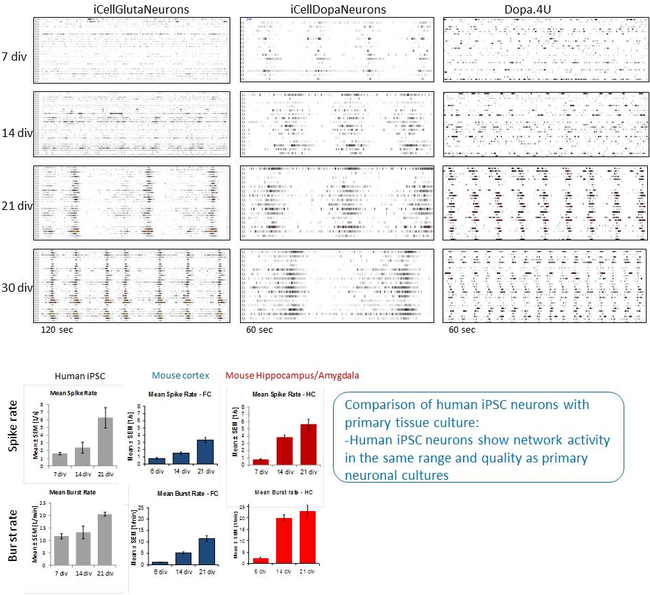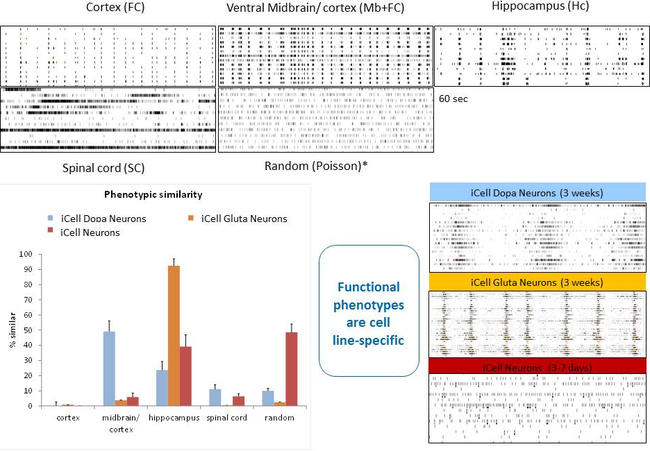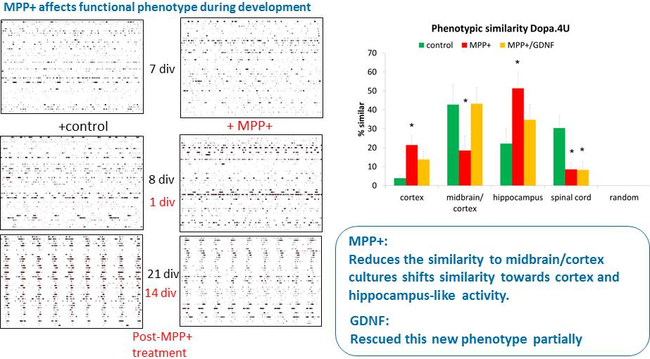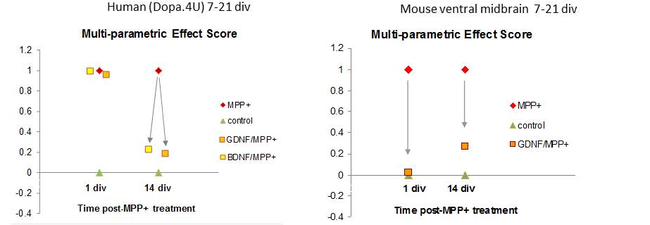Human iPSC Derived Neuronal Cell Culture Services
Human neuronal stem cell and induced pluripotent stem cell, iPSC, cultures are of high scientific and practical interest in drug discovery, toxicology and for future therapeutic applications. Human iPSC from patient are used for new in vitro disease models.
To understand the differentiation process of these stem cell cultures into neurons is an important and complex task and an essential prerequisite for the functional characterization of test compounds in a human cellular background.These iPSC cultures can be differentiated to different neuron cell type cultures as glutamatergic, gabaergic, dopaminergic or motoneurons and others for further information see also on our stem cells technology page.
Functional and Phenotypic Screening With Human iPSC derived Neuronal Cell Cultures
- Phenotypic screening of test compounds on human iPSC derived neurons: We have developed and established protocols for human iPSC neurons on microelectrode arrays, MEAs, together with our commercial partners who offer iPSC-neurons and neuronal progenitor cells, NPC's. NeuroProof offers these human iPSC derived neuronal cultures for compound screening.
- Functional characterization of your hiPSC-derived neurons or progenitors: We apply your protocol for culturing neurons or NPCs and screen them during their synaptic and neurogenic development on micro-electrode arrays. Having more than five years of experience with hiPSC neuron recordings, we optimize your culture protocols based on functional activity readouts and compare their activity with commercially available reference cell lines.
- Comparing functional human and mouse phenotype: We have a database of several hundreds to thousands of datasets from mouse tissue-specific neuron cultures. We compare stem cell-derived neuronal network activity patterns with primary cell recordings. This is a powerful tool to characterize tissue-, species- and compound-specific functionality. See the images below on the classification of activity patterns from iPSC-derived neuronal networks and the assessment of phenotype genotype correlations.
- Parkinson's disease in a dish: We induce disease-associated functional phenotypes into human iPSC neuronal networks for the screening of neuro-protective compounds. We use dopaminergic neuronal networks and functionally impaired them e.g. by recombinant monomeric or filamentous alpha synuclein or low-concentrated MPP+. These disease phenotypes are quantified by multi-parametric data analysis and sophisticated artificial intelligence tools. This allows us to rank rescue efficacy of your compounds in a simple manner.
- Functional biomarker screening: we compare human iPSC-derived neurons from healthy individuals with patient-derived cultures and identify disease-related functional parameters. These functional biomarkers allow specific compound screening.
- Together with you we establish specific disease models based on your specific indication and gene of interests.
Contact us for more information
Neuronal networks from iPSC on Microelectrode Arrays

Human iPSC derived neuronal cell cultures cultivated on microelectrode arrays.
Functional development and differentiation of human stem cell derived neurons

Image: Human iPSC show spike train activity development over time for glutamatergic and also gabaergic neurons. Primary neuronal cell cultures from mouse and iPSC derived neuronal cultures show similar activity development over time. Glutamatergic and dopaminergic hIPSC derived neural cultures develop synchron activity patterns over time comaparable to primary neuronal cell cultures.
Phenotypic comparison of human neuronal cultures vs. mouse cultures

Image: Functional activity pattern of electrophysiological activity for iPSC derived glutamatergic and dopaminergic neruons comaperd with different brain regions from primary cultures.
Parkinson's disease in a dish

Image: Application of MPP+ is rescued by GDNF in dopaminergic iPSCd neuron cultures. MPP+ disturbs the developmental differentiation process of these stem cell derived cultures, which can be rescued by GDNF in this stem cell based assay.
Comparing phenotypic effects between human and mouse cells

Image: GDNF rescues MPP+ effects in human stem cell cultures and primary ventral midbrain cultures from mouse. The comparison of the phenotype of primary midbrain mouse neurons and dopaminergic hIPSC neurons show a different time course of rescuing effects of GDNF and BDNF.

 +49 381 54345-660
+49 381 54345-660
